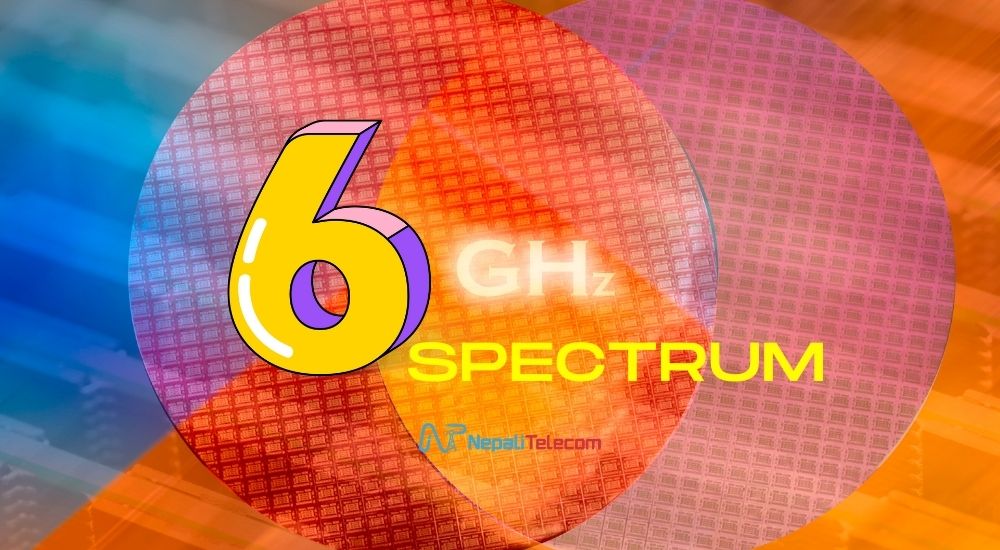Partitioning the 6 GHz band for telecommunications would help raise Asia-Pacific’s economic prospects and also help reduce the digital divide.
6 GHz band or the mid-band frequency is seen as the most prized asset for next-gen communications with the highest potential for efficiency and coverage. And as the reliance on communications grows for businesses; the 6 GHz band (5925 – 7125 MHz) is considered the best bet to realize the economic goals with.
The mid-band frequency is in the eye of regulators, states, and telecom companies around the world for a while. And one of them is Scott Minehane, Managing director of Windsor Place Consulting Pty Ltd who is also an advisor to the government, and organizations such as ITU, and GSMA.

Minehane, speaking to Telecom Review Asia, shared his insights on the efficacy of the 6 GHz in Asia-Pacific and its use cases to stimulate the region’s digital economy. For this, he drew out key points that could be crucial in the adoption of the popular mid-band 6 GHz band.
Partitoining the 6 GHz band
World Radiocommunication Conferences (WRC) 23 is on the horizon and spectrum regulators have begun mulling over 6 GHz (5925 – 7125 MHz). Particularly, they have focused on how to allocate the band so as to realize its maximum benefits.
Minehane, in his part, has observed the following approaches for the 6 GHz allocation:
- allocating all 6 GHz band to WiFi or International Mobile Telecommunications (IMT)
- partitioning the 6 GHz band to both WiFi and IMT
Such practice is not noble in Asia-Pacific either. China has already allocated the entire 6 GHz band for IMT services. On the contrary, South Korea has done so for WiFi.
Similarly, countries like Malaysia, Thailand, and Australia announced their decision to allocate the lower 500 MHz to WiFi. They are, likewise, using the upper 700 MHz to WRC-23 processes.
“Countries such as Japan, Hong Kong, Singapore, Indonesia, Vietnam, and New Zealand are currently evaluating their approach, with consultation papers out in Japan and Hong Kong. India, Pakistan, Philippines, and Cambodia are still in the early stages of reviewing available options,” Minehane added.
Do read: Mobile Service Below Standards, NTA’s Drive Test Finds
Sharing between WiFi and IMT
But he has also sided with GSMA recommendations. He advises 6 GHz partitioning between WiFi (5925-6425 MHz) and IMT (6425-7125 MHz) in Asia-Pacific. In May 2021, GSMA called on governments to allocate GSMA Calls On Governments To Rollout 6GHz Spectrum For 5G network.
He notes that Asia-Pacific states lack sufficient C-band spectrum for IMT services to complement 5G and 6G. So, he proposes the 6 GHz hardware with massive MIMO antennas. HE sees them as potent substitutes for the 3.5 GH band. USA regulator has allocated the much-talked C-band spectrum (including 3.45-3.55 GHz and 3.7-4.0 GHz) for mobile carriers.
“There is a compelling need for additional mid-band spectrum given the shortfall in C-band and low-band spectrum in Asia-Pacific,” said Minehane. “Band partitioning ensures that not all the eggs are in one basket.”
Check out: National Frequency strategy of Nepal
6 GHz band for WiFi won’t mean much
Minehane has shared that allocating the 6 GHz band to WiFi won’t bridge the digital divide in the region. Saying that this would only go to fixed band internet, it won’t dramatically improve data speeds either.
So, partitioning the 6 GHz low band spectrum like 700 MHz in rural areas and using 2.6 GHz, 3.5 GHz and 6 GHz for IMT services in urban areas would be a much better use case for the 6 GHz band. He also names cities like Manila, Hanoi, Bangkok, and Jakarta to benefit from such 6 GHz band applications.
On the digital divide, Minehane shared, “Making more spectrum available ensures that price per MHz/Pop is reasonable, which in turn ensures affordability of services to address a rural-urban divide.”
He has also elaborated on the economic prospects of the 6 GHz band. Referencing the studies in the UK, he argues that the economic benefits mostly derive from allocating 500 MHz to WiFi services in the 6 GHz band. Allocating an additional 700 MHz band in the 6 GHz band to Fixed-line broadband (1200 MHz) drew a slim economical return.
Hence, by comparison, allocating the 700 MHz bands to IMT translated to higher economic advantages.
He reasons that partitioning the 6 GHz band is the only way to harbor socioeconomic benefits from additional spectrum allocation to both WiFi and IMT services.
Check out: Huawei and China Unicom Announce 5G Private Network PLUS Achievements
For the growth in IMT services
(Global System for Mobile Communications) GSMA says there are over 489 operators across 146 countries investing in 5G networks by January 2022. Likewise, it predicts the global 5G subscriptions to reach 4.4 billion in 2027.
So, for 5G to reach its potential, countries need 2 GHz of mid-band spectrum for IMT with the data rate of 100 Mbit/s downlink and 50 Mbit/s (uplink). This is the data for city-wide coverage between 2025 and 2030.
GSMA states that data consumption has increased by a third between 2019 and 2020. Now, with more demands for bandwidth, consumers are demanding higher data rates and more security beyond WiFi.
“Moreover, we tend to underestimate how much spectrum we need,” Minehane added. “Providing additional IMT mid-band spectrum allows for spectrum refarming to cater for options to future proof 5G, for 5G advanced due in 2025 and 6G expected in 2030.”
As Asian countries make newer strides in mobile networks, they are also forsaking legacy networks. Various states will switch off 2G and 3G if they have not already done so. This will further contribute to the growing IMT band demands in the Asia-Pacific region. Also read: 2G or 3G? Which Mobile Network Will Shut Down in Nepal?
Making a case for upper 6 GHz band for IMT services
Besides, Minehane has made another case for the allocation of the upper 6 GHz band for IMT services. He shared that 3GPP RAN Plenary has already unveiled standardization work of the upper 6 GHz band (6425-7125 MHz) as a new IMT frequency band this year.
“This step leapfrogs the development of a 6 GHz IMT ecosystem. What it means for the industry is that products for use with Wi-Fi 6E/7 and IMT in the 6 GHz range will be released almost simultaneously as early as later this year or early 2023.”
At last, Minehane states that regulators have the challenge to predict and keep options open for the 6 GHz band.
He says the states need “to champion the allocation of 6 GHz for licensed IMT and unlicensed use and steer collaborative works amongst industry stakeholders and vendors to achieve maximum impact on communities and economies.”
Don’t miss: Forget 5G, China Tops 1 Tbps 6G Speed, the Fastest Yet
5G trials could soon start in Nepal. When it is finally available, how eager will you be to try 5G signals on your smartphone? Will it be your need or rather a guarantee for advanced mobile communications to you? Do leave your opinion in the comments below.













